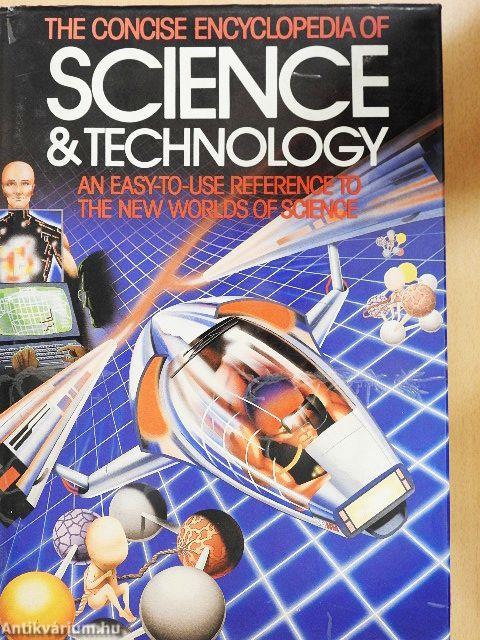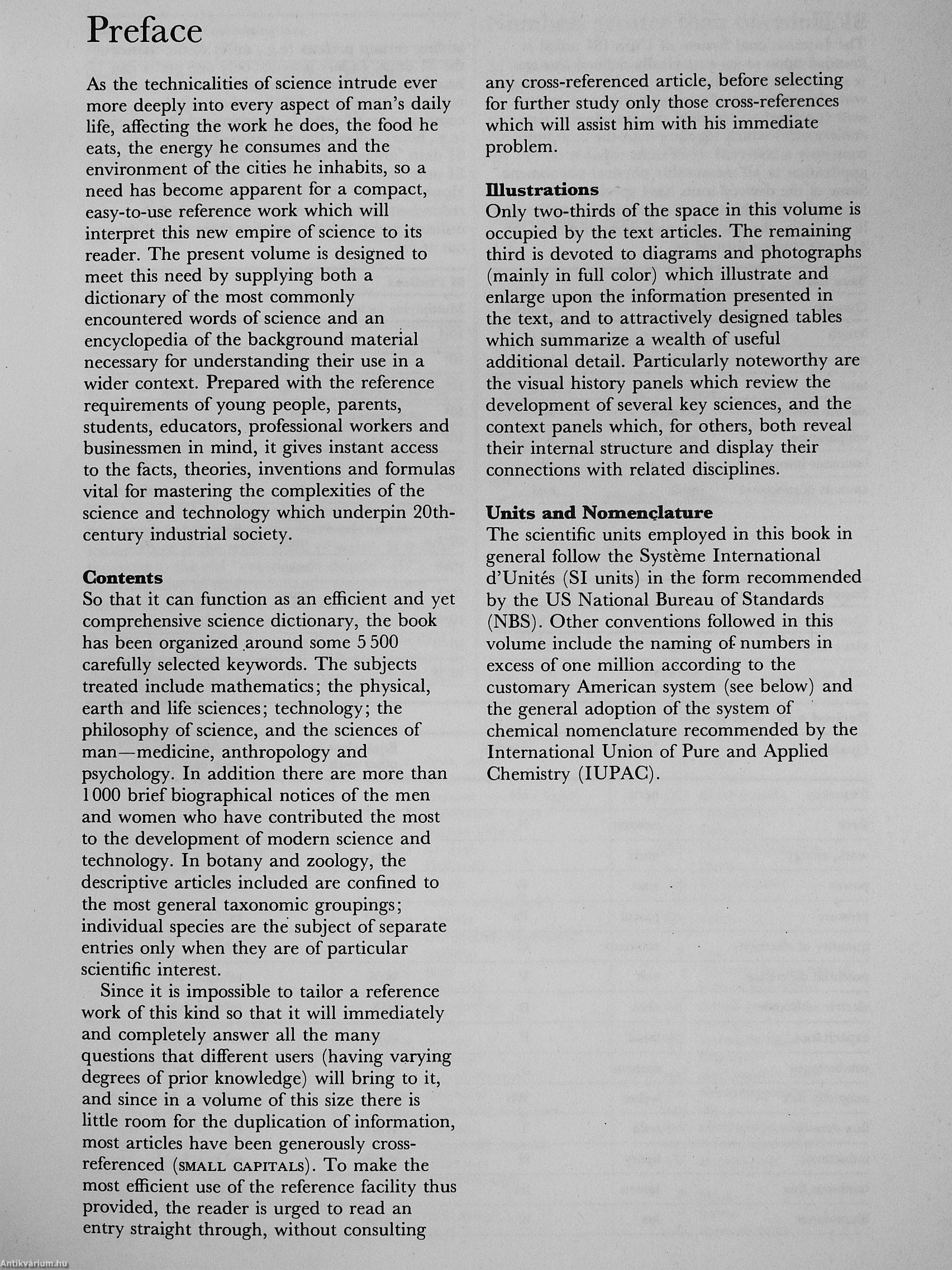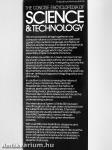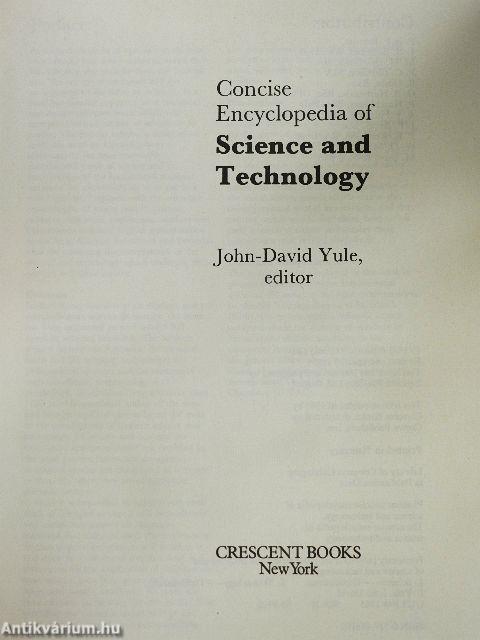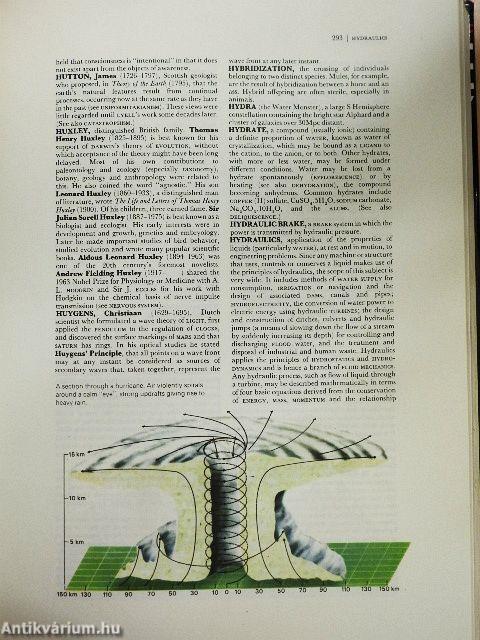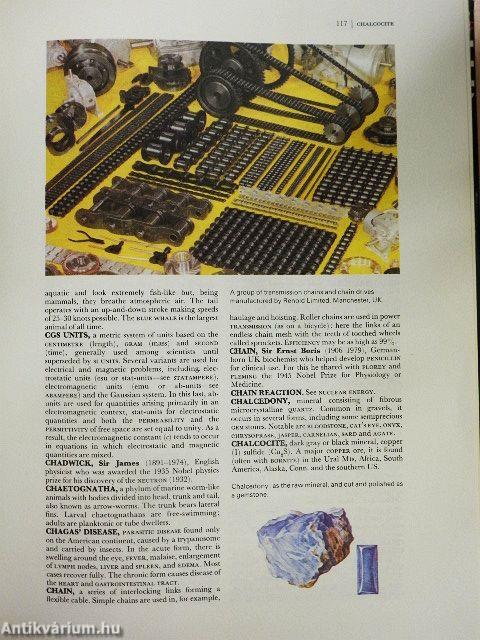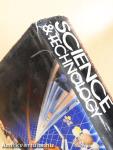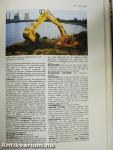1.104.174
kiadvánnyal nyújtjuk Magyarország legnagyobb antikvár könyv-kínálatát

VISSZA
A TETEJÉRE
JAVASLATOKÉszre-
vételek
Concise Encyclopedia of Science and Technology
An Easy-to-Use Reference to the New Worlds of Science
| Kiadó: | Crescent Books |
|---|---|
| Kiadás helye: | New York |
| Kiadás éve: | |
| Kötés típusa: | Vászon |
| Oldalszám: | 590 oldal |
| Sorozatcím: | |
| Kötetszám: | |
| Nyelv: | Angol |
| Méret: | 26 cm x 19 cm |
| ISBN: | 0-517-48610-5 |
| Megjegyzés: | Színes fotókkal, illusztrációkkal, ábrákkal. |
naponta értesítjük a beérkező friss
kiadványokról
naponta értesítjük a beérkező friss
kiadványokról
Előszó
TovábbFülszöveg
Originally published at 40.00
THE CONCISE ENCYCLDPEDIAOF
SCIENCE
TECHNOLOGY
This encyclopedia brings together in one compact volume a convenient, non-specialist guide to the contents, language and history of science and technology It enables the layman to find his way through the seemingly complex technical language which obscures the essentially simple concepts of science.
The entries are written in a clear, concise manner by a team of specialist authors who interpret the scope of science widely investigating not only the physical, earth and life sciences of astronomy chemistry metallurgy physics, biology geology biochemistry and medicine, but also the sciences of man: anthropology psychology linguistics and philosophy
In addition to articles surveying the history of each group of sciences, there are brief biographies of l<ey figures in the history of science, particularly Nobel prizewinners in chemistry physics, physiology and medicine. The bool< also contains reference... Tovább
Fülszöveg
Originally published at 40.00
THE CONCISE ENCYCLDPEDIAOF
SCIENCE
TECHNOLOGY
This encyclopedia brings together in one compact volume a convenient, non-specialist guide to the contents, language and history of science and technology It enables the layman to find his way through the seemingly complex technical language which obscures the essentially simple concepts of science.
The entries are written in a clear, concise manner by a team of specialist authors who interpret the scope of science widely investigating not only the physical, earth and life sciences of astronomy chemistry metallurgy physics, biology geology biochemistry and medicine, but also the sciences of man: anthropology psychology linguistics and philosophy
In addition to articles surveying the history of each group of sciences, there are brief biographies of l<ey figures in the history of science, particularly Nobel prizewinners in chemistry physics, physiology and medicine. The bool< also contains reference articles on the branches of mathematics necessary for understanding science.
The International System of Units (SI) has been used throughout, although older unit systems form the subjects of individual articles. Chemical substances are usually referred to according to their lUPAC (systematic) names, although common names are also given whenever possible.
With over 500 color illustrations, diagrams and tables and a thorough system of cross-referencing that allows the readerto discoverthe meaning ofany unfamiliar word, this excellent book will appeal to anyone who is interested In the world of science and will be invaluable to students of all levels. Vissza
Témakörök
- Lexikonok > Természettudomány
- Idegennyelv > Idegennyelvű könyvek > Angol > Természettudományok > Egyéb
- Természettudomány > Általános természettudomány > Kutatások, felfedezések
- Természettudomány > Általános természettudomány > Lexikonok, enciklopédiák
- Természettudomány > Általános természettudomány > Történet
- Természettudomány > Általános természettudomány > Tudomány
- Természettudomány > Általános természettudomány > Idegennyelvű > Angol
- Idegennyelv > Idegennyelvű könyvek > Angol > Lexikonok > Egyéb



